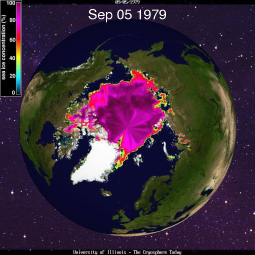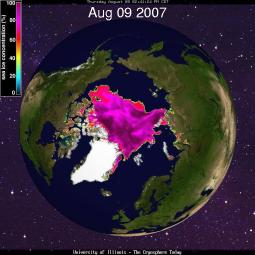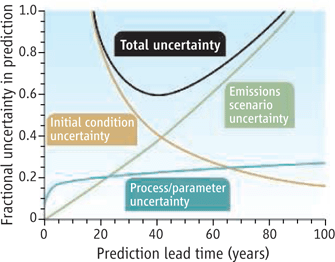Gavin Schmidt and Michael Mann
Scientific theories gain credence from successful predictions. Similarly, scientific commentators should gain credibility from whether their comments on new studies hold up over time. Back in 2005 we commented on the Bryden et al study on a possible ongoing slowdown in the North Atlantic overturning circulation. In our standard, scientifically cautious, way we said:
… it might be premature to assert that the circulation definitely has changed.
Our conclusion that the Bryden et al result ‘might be premature’ was based on a balance of evidence argument (or, since we discussed this a few days ago, our Bayesian priors) for what the consequences of such a slowdown would be (a (unobserved) cooling in the North Atlantic). We also reported last year on some data that would likely help assess the uncertainty.
Well, now that data has been properly published (reported here) and it confirms what we thought all along. The sampling variability in the kind of snapshot surveys that Bryden et al had used was too large for the apparent trends that they saw to be significant (which the authors had correctly anticipated in the original paper though).
Score one for Bayesian priors.



 Between the difficulty of long-term weather forecasts and the impossibility of accurate predictions for economic conditions a century hence, there is a sweet spot for climate forecasts. This spot, maybe between 20 and 50 years out, is where the emissions scenarios don’t matter too much (given the inertia of the system) and where the trends start to be discernible over the noise of year to year weather.
Between the difficulty of long-term weather forecasts and the impossibility of accurate predictions for economic conditions a century hence, there is a sweet spot for climate forecasts. This spot, maybe between 20 and 50 years out, is where the emissions scenarios don’t matter too much (given the inertia of the system) and where the trends start to be discernible over the noise of year to year weather.